Masterpieces of world column design: the controversial BeoSound Shape or how Bang & Olufsen tried to “trick” physics
Last year, the famous Danish brand Bang & Olufsen introduced an acoustic system that was hard to miss. Another experiment of the company, famous as a developer of unusual and expensive audio components, is equally interesting from the point of view of electroacoustics, room acoustics, design features and design of speakers. This is a Bang & Olufsen BeoSound Shape.
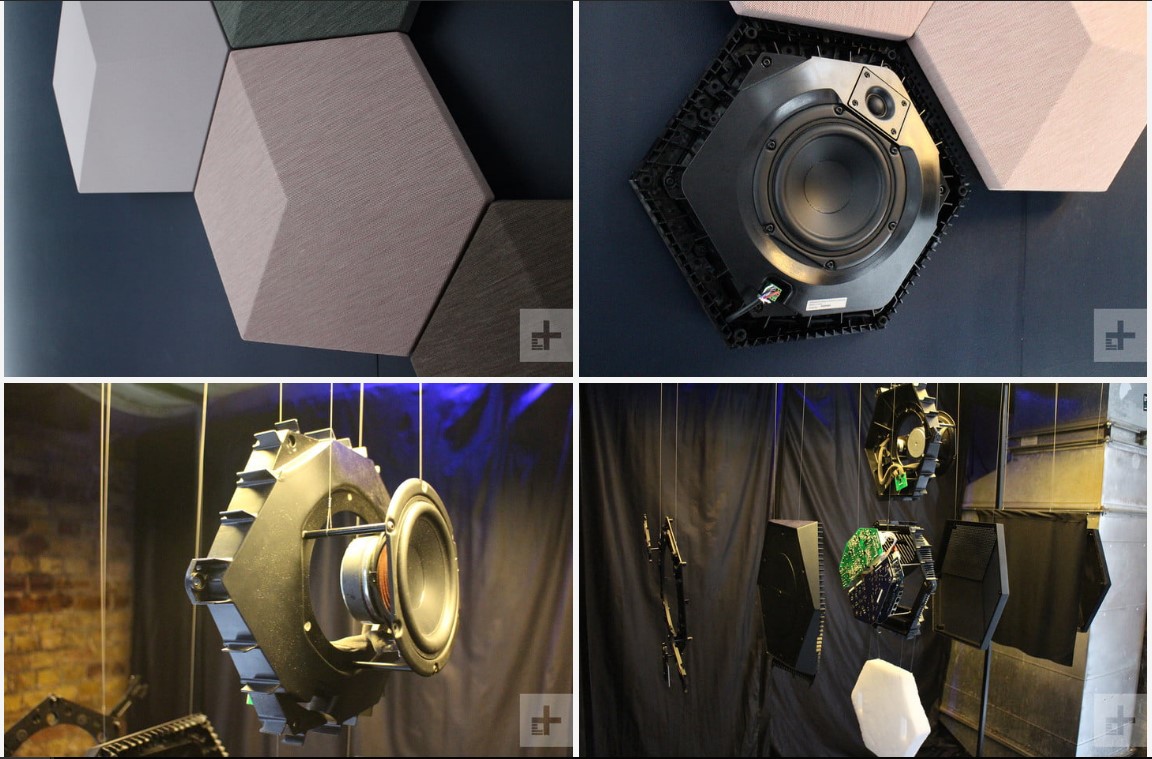
The year of sales showed that the experimental kit did not become a mass product, but found a niche application as a complete solution for expensive interiors in private apartments, clubs and restaurants. The system received a lot of ambiguous reviews from experts, and the authoritative edition of “What Hi-fi?” Ranked this multiroom installation as the best speakers of the last year. Under the cut in detail about the BeoSound Shape, about what happened to make the ambitious Danes.
BeoSound Shape attracted my attention by the fact that it is built according to the modular principle and includes several elements, among which, in addition to standard emitters and amplifiers, there are modules for acoustic treatment of rooms. B & O engineers took the concept as a basis in which the sound is more dependent on the acoustics of the room than on the speaker enclosure, and its characteristics can be changed using certain modules in the system.

Externally, the B & O BeoSound Shape is not similar to any of the existing multi-room systems and rather resembles a work of modern art. Having seen a three-dimensional wall panel, resembling a honeycomb in shape or an abstract work of a suprematist artist, hardly anyone will suspect in it a sufficiently functional audio device. The border between the design element and the equipment in the BeoSound Shape is erased slightly less than completely.
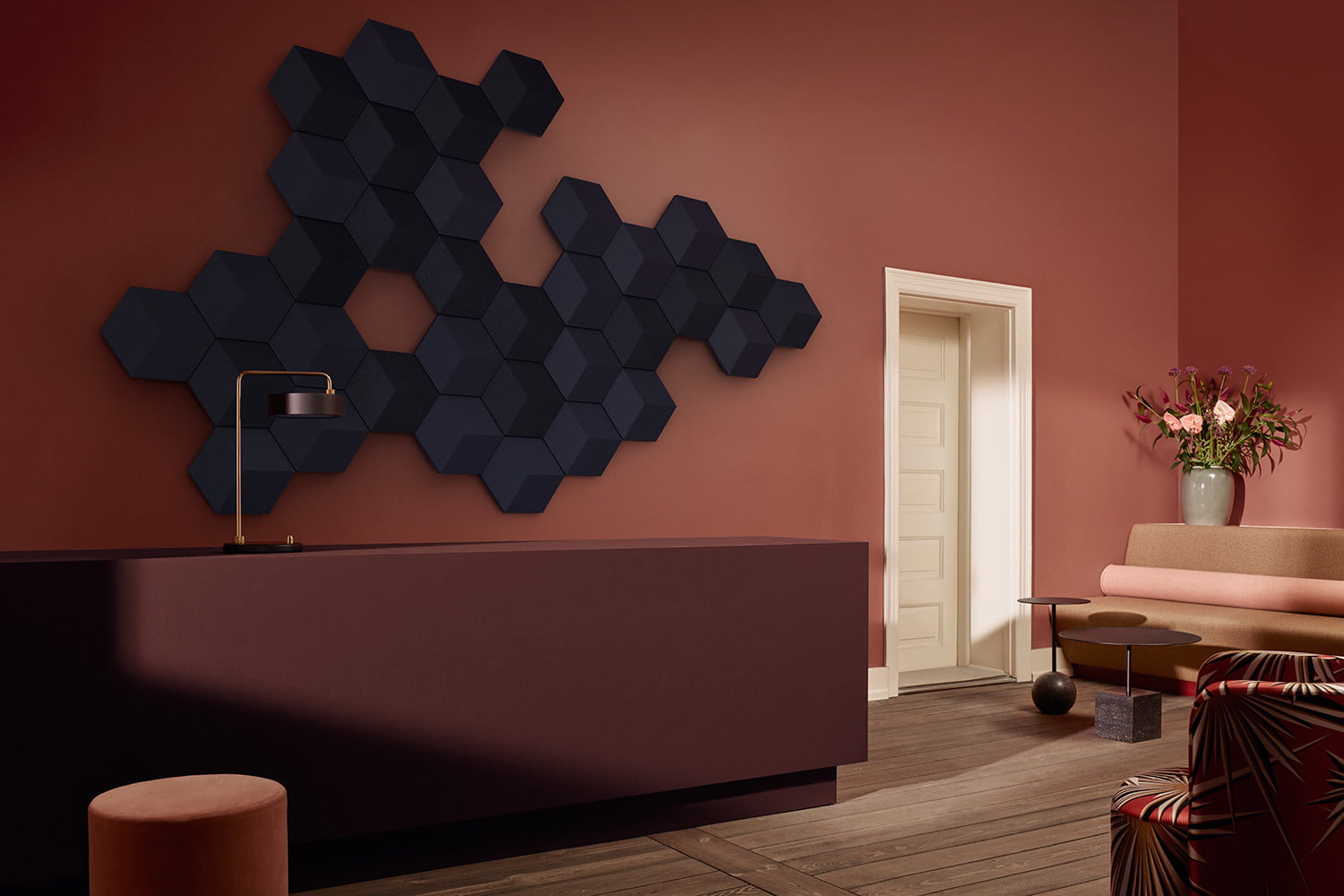
The system, as befits a modern multiroom - wireless. The basic elements are an amplifier, a unit with tweeters and midrange / woofers and a unit with a sound-absorbing damper. All elements are independent, represent the same size hexagonal modules, which are covered with decorative fabric linings (“tiles”), which hide their functional purpose.
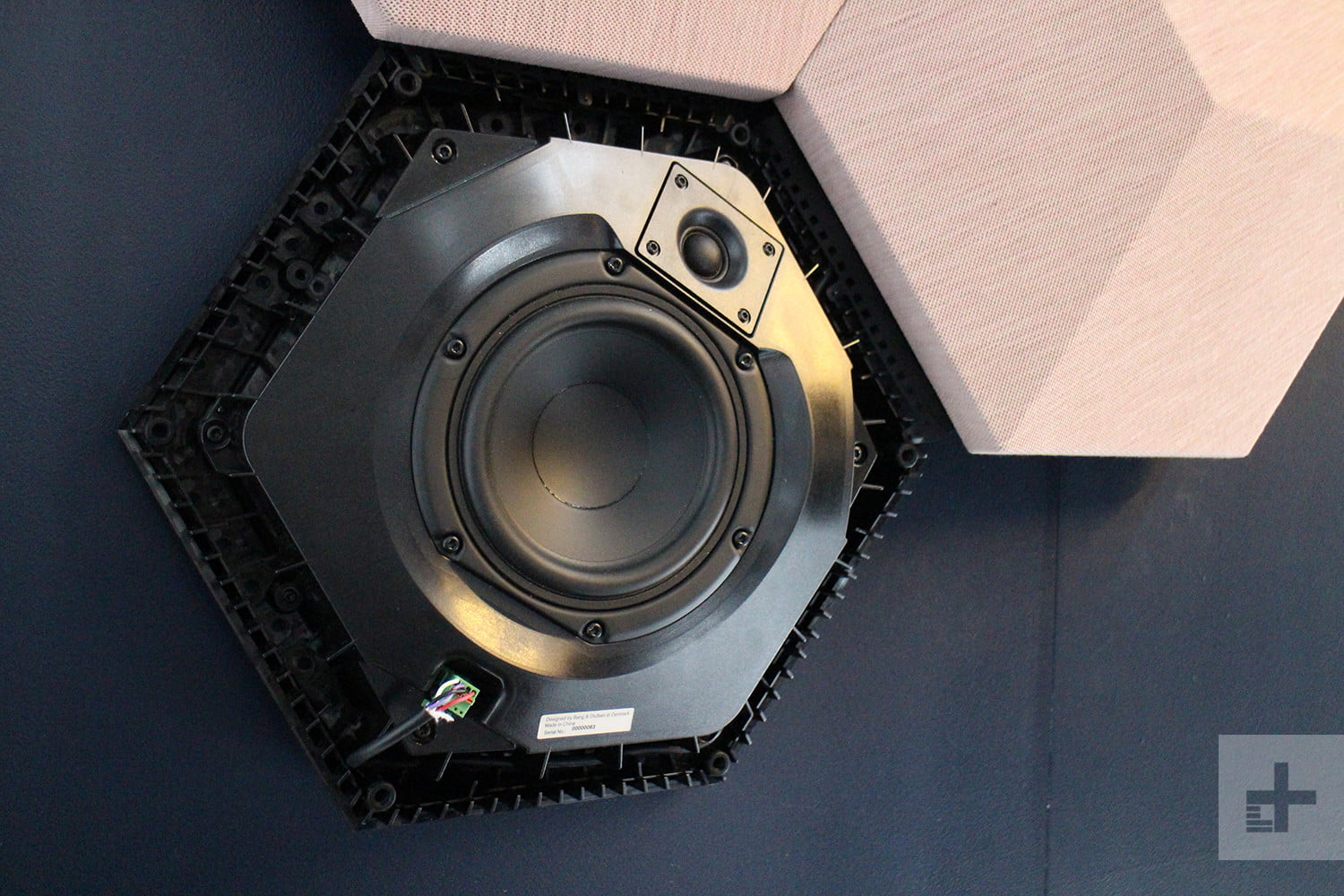
I design a neo-modern tendencies of the 60s, and this approach seems controversial to me. I can not say that it is definitely bad, rather the opposite, but I believe that the aesthetics of audio equipment should be as universal as possible. This cannot be said about the BeoSound Shape, as it will not fit into any interior. My friends, architects and interior designers, were, on the contrary, fascinated by this concept and called it the best that audio producers were currently creating.
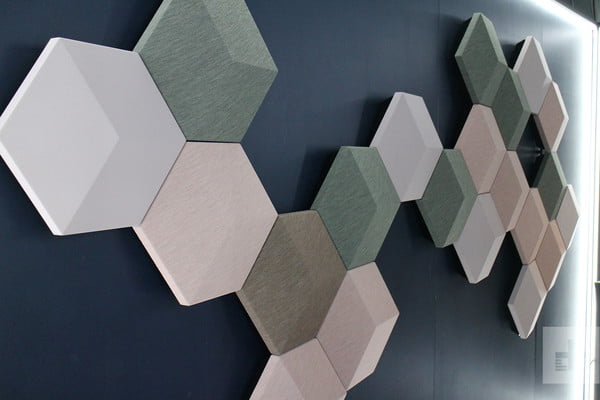
For the sake of justice, it can be noted that the system fits very organically into suitable interiors and is perceived as part of the decor. Moreover, the manufacturer offers a fairly wide palette and a textured assortment of fabric "tiles" covering the modules, which allows them to be flexibly adapted to the room. But such a focus does not always work, which limits the use of the system.

The core of the system is BeoSound Core, which is used for wireless switching and audio streaming. It connects to the optical and USB inputs of the Shape amplifier.

With this module, you can transfer music using Wi-Fi, Bluetooth, Apple AirPlay, DLNA, Google Chromecast, Spotify Connect and Deezer. BeoSound Core supports the following audio formats: MP3, WMA (except for WMA lossless), AAC, ALAC, FLAC, WAV, AIFF, supports high-resolution up to 24 bits / 192 kHz. Naturally, it is also equipped with B & O's own BeoLink system, which allows you to integrate other B & O products with BeoLink into a single multi-room system.

The compact dimensions of the radiating modules immediately suggest that the B & O decided to deceive the physicists and seek to get a decent sound from the small speaker. As it turned out after listening, this is partly true. The volume of acoustic modules is incommensurable with the traditional acoustic design, which affects the sound pressure and frequency response.

In this case, the situation can be viewed from the other side. The problem with sound pressure can be easily solved by adding additional radiating modules and amplifiers to the system, which are easily attached to an already installed system. The downside in this case is only the growing cost of the kit. Although it is likely that this, according to B & O marketers, is unlikely to concern the target consumer, who is able to pay 3600 Euros for a basic acoustic system.
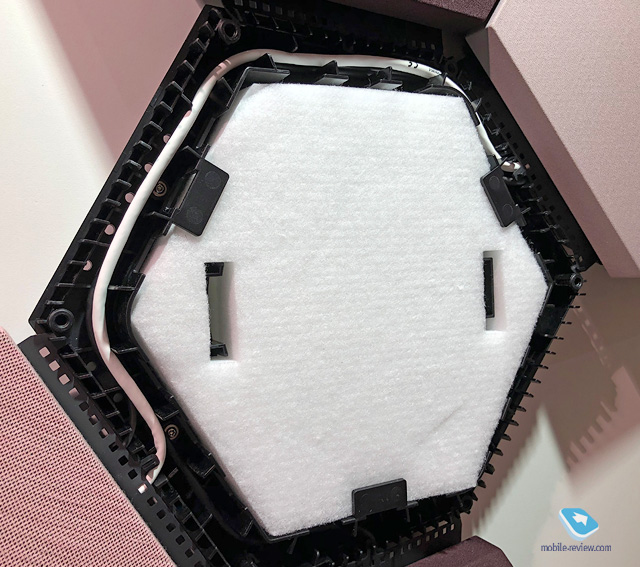
Thus, the most important is the acoustics of the room, which should be corrected by sound absorption of the dampers, and the sound pressure should be increased by the number of emitters. Naturally, for most rooms that were not acoustically prepared properly, a lot of dampers will be needed, especially in the places of the first reflections and a lot of emitters for good volume. Fabric panels will provide some kind of scattering. All this will require the acquisition of a large number of panels (at exhibitions, they used about 20 demonstration boards and they sounded cool).
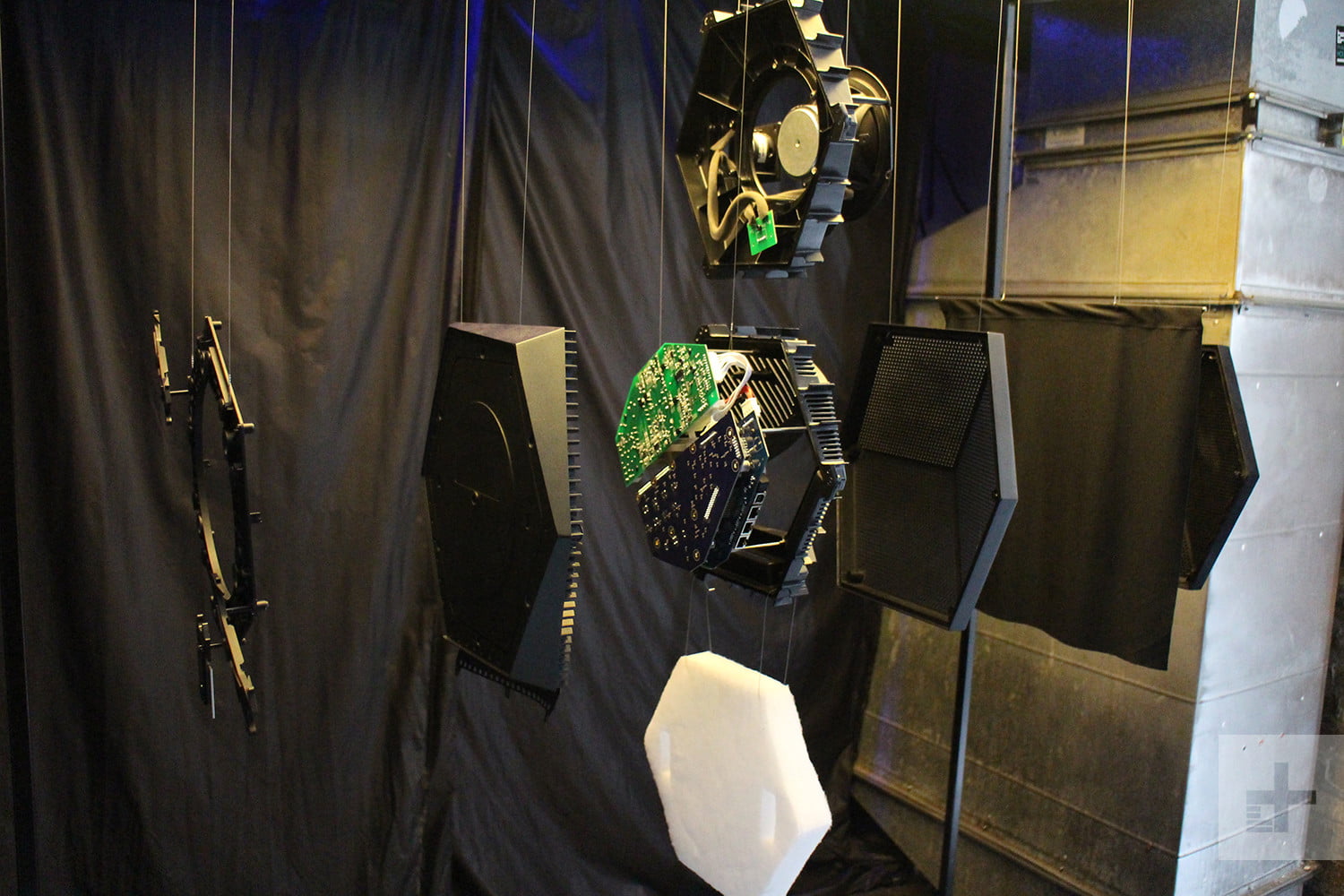
I make a bold assumption that in this way B & O motivates future users to buy something more substantial than the basic set for 3,600 Euros. If it is very rough, then in order for the BeoSound Shape to sound really good, the room where they are located must be turned into a kind of damped studio with perfect acoustics, and a third of the area of the walls will emit sound. In other words, it is the room that will be the main speaker building operating inside. And this is probably very cool, but fabulously expensive.
The maximum configuration that the system can support is 11 amplifying modules. Each of them is equipped with eight amplifiers, designed for 4 emitting modules (ie, 2 stereo pairs), which allows you to connect 44 panels with speakers. Considering that the RMS of each amplifier in the module is 80 W, the total power of such a sound wall of the system will be 3.5 kW. This is enough to reserve a small club.
Anticipating the questions of some readers, I will write about the weakest point of this system. With LF everything is as good as the system can have, where the MF / LF driver has a diameter of 13 cm, and the volume of the case does not exceed 3.5 liters. Thus, the bass there is rather mediocre, although unexpectedly good low averages.
The situation can be corrected by a subwoofer, and in the B & O lines there is even an appropriately designed, pentagonal-shaped BeoLab 19 apparatus. With it everything will be almost perfectly perfect, but this is money again.
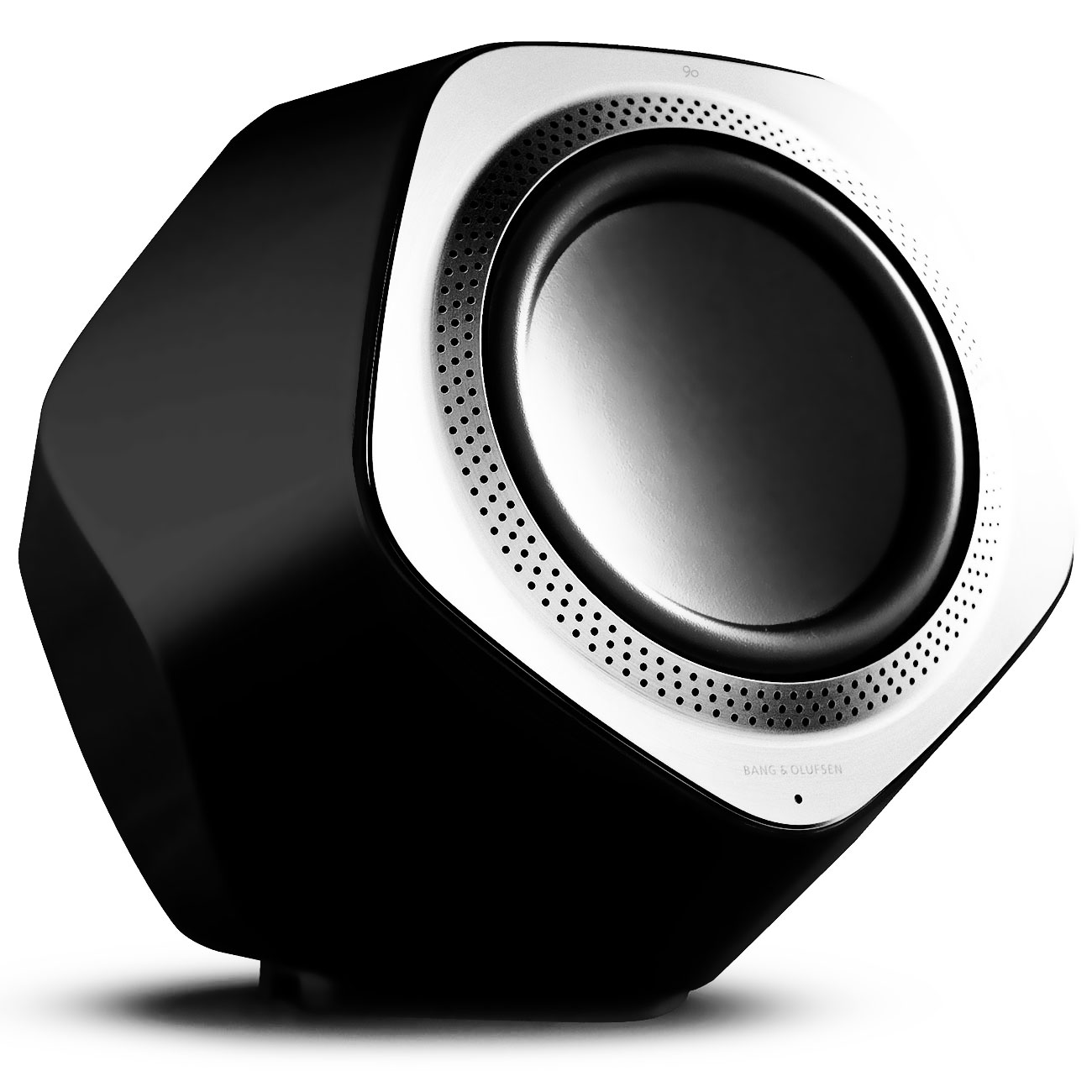
An alternative way to enhance the bass can only be a correction of the acoustics of the room, but for this it will need to be turned into a kind of resonator. This decision seems to me even less rational than buying a subwoofer. In this sense, the physicist was not very successful, but there was a good reason to sell a good powerful subwoofer to the target consumer.
Probably, B & O does not publish anywhere exact specifications regarding system frequency response, sensitivity and sound pressure, as well as the level of distortion. At least I could not find them. This is not a rare situation with modern audio components. In this case, I see 2 main reasons:
The system is really original, and the rationality of its technical solutions will still be controversial for a long time. At the same time, it can sound great (with considerable investments and the resolution of issues with low frequencies). Moreover, it has interesting advantages in terms of room acoustics (damper) and a unique aesthetic component.
Such a speaker is unlikely to suit radical lovers of high fidelity playback. They will certainly prefer options with the same sound result, which will be 5-10 times cheaper than the basic set of BeoSound Shape. At the same time, it will appeal to discerning aesthetes, who are willing to really pay dearly for avoiding a compromise between sound and aesthetics. Photo
content used:
www.digitaltrends.com
www.techradar.com
www.technodom.kz
www.mobile-review.com
Jeans
There is currently no BeoSound Shape in our catalog, meanwhile there is a wide range of acoustic systems , multi-room systems and other audio components. You can view the current list of Bang & Olufsen products we have here .

The year of sales showed that the experimental kit did not become a mass product, but found a niche application as a complete solution for expensive interiors in private apartments, clubs and restaurants. The system received a lot of ambiguous reviews from experts, and the authoritative edition of “What Hi-fi?” Ranked this multiroom installation as the best speakers of the last year. Under the cut in detail about the BeoSound Shape, about what happened to make the ambitious Danes.
Modularity and design
BeoSound Shape attracted my attention by the fact that it is built according to the modular principle and includes several elements, among which, in addition to standard emitters and amplifiers, there are modules for acoustic treatment of rooms. B & O engineers took the concept as a basis in which the sound is more dependent on the acoustics of the room than on the speaker enclosure, and its characteristics can be changed using certain modules in the system.

Externally, the B & O BeoSound Shape is not similar to any of the existing multi-room systems and rather resembles a work of modern art. Having seen a three-dimensional wall panel, resembling a honeycomb in shape or an abstract work of a suprematist artist, hardly anyone will suspect in it a sufficiently functional audio device. The border between the design element and the equipment in the BeoSound Shape is erased slightly less than completely.

The system, as befits a modern multiroom - wireless. The basic elements are an amplifier, a unit with tweeters and midrange / woofers and a unit with a sound-absorbing damper. All elements are independent, represent the same size hexagonal modules, which are covered with decorative fabric linings (“tiles”), which hide their functional purpose.

I design a neo-modern tendencies of the 60s, and this approach seems controversial to me. I can not say that it is definitely bad, rather the opposite, but I believe that the aesthetics of audio equipment should be as universal as possible. This cannot be said about the BeoSound Shape, as it will not fit into any interior. My friends, architects and interior designers, were, on the contrary, fascinated by this concept and called it the best that audio producers were currently creating.

For the sake of justice, it can be noted that the system fits very organically into suitable interiors and is perceived as part of the decor. Moreover, the manufacturer offers a fairly wide palette and a textured assortment of fabric "tiles" covering the modules, which allows them to be flexibly adapted to the room. But such a focus does not always work, which limits the use of the system.

Source and its capabilities
The core of the system is BeoSound Core, which is used for wireless switching and audio streaming. It connects to the optical and USB inputs of the Shape amplifier.

With this module, you can transfer music using Wi-Fi, Bluetooth, Apple AirPlay, DLNA, Google Chromecast, Spotify Connect and Deezer. BeoSound Core supports the following audio formats: MP3, WMA (except for WMA lossless), AAC, ALAC, FLAC, WAV, AIFF, supports high-resolution up to 24 bits / 192 kHz. Naturally, it is also equipped with B & O's own BeoLink system, which allows you to integrate other B & O products with BeoLink into a single multi-room system.

The concept of building modules and a little healthy skepticism
The compact dimensions of the radiating modules immediately suggest that the B & O decided to deceive the physicists and seek to get a decent sound from the small speaker. As it turned out after listening, this is partly true. The volume of acoustic modules is incommensurable with the traditional acoustic design, which affects the sound pressure and frequency response.

In this case, the situation can be viewed from the other side. The problem with sound pressure can be easily solved by adding additional radiating modules and amplifiers to the system, which are easily attached to an already installed system. The downside in this case is only the growing cost of the kit. Although it is likely that this, according to B & O marketers, is unlikely to concern the target consumer, who is able to pay 3600 Euros for a basic acoustic system.

Thus, the most important is the acoustics of the room, which should be corrected by sound absorption of the dampers, and the sound pressure should be increased by the number of emitters. Naturally, for most rooms that were not acoustically prepared properly, a lot of dampers will be needed, especially in the places of the first reflections and a lot of emitters for good volume. Fabric panels will provide some kind of scattering. All this will require the acquisition of a large number of panels (at exhibitions, they used about 20 demonstration boards and they sounded cool).

I make a bold assumption that in this way B & O motivates future users to buy something more substantial than the basic set for 3,600 Euros. If it is very rough, then in order for the BeoSound Shape to sound really good, the room where they are located must be turned into a kind of damped studio with perfect acoustics, and a third of the area of the walls will emit sound. In other words, it is the room that will be the main speaker building operating inside. And this is probably very cool, but fabulously expensive.
The maximum configuration that the system can support is 11 amplifying modules. Each of them is equipped with eight amplifiers, designed for 4 emitting modules (ie, 2 stereo pairs), which allows you to connect 44 panels with speakers. Considering that the RMS of each amplifier in the module is 80 W, the total power of such a sound wall of the system will be 3.5 kW. This is enough to reserve a small club.
The issue of low frequencies and the problem of significant characteristics
Anticipating the questions of some readers, I will write about the weakest point of this system. With LF everything is as good as the system can have, where the MF / LF driver has a diameter of 13 cm, and the volume of the case does not exceed 3.5 liters. Thus, the bass there is rather mediocre, although unexpectedly good low averages.
The situation can be corrected by a subwoofer, and in the B & O lines there is even an appropriately designed, pentagonal-shaped BeoLab 19 apparatus. With it everything will be almost perfectly perfect, but this is money again.

An alternative way to enhance the bass can only be a correction of the acoustics of the room, but for this it will need to be turned into a kind of resonator. This decision seems to me even less rational than buying a subwoofer. In this sense, the physicist was not very successful, but there was a good reason to sell a good powerful subwoofer to the target consumer.
Probably, B & O does not publish anywhere exact specifications regarding system frequency response, sensitivity and sound pressure, as well as the level of distortion. At least I could not find them. This is not a rare situation with modern audio components. In this case, I see 2 main reasons:
- a system with different number of modules, configuration and in different rooms will sound differently;
- The modest acoustic capabilities of the base set can scare away discerning audiophiles who ignore the modular expansion possibilities and will judge by the characteristics of a single element.
Total
The system is really original, and the rationality of its technical solutions will still be controversial for a long time. At the same time, it can sound great (with considerable investments and the resolution of issues with low frequencies). Moreover, it has interesting advantages in terms of room acoustics (damper) and a unique aesthetic component.
Such a speaker is unlikely to suit radical lovers of high fidelity playback. They will certainly prefer options with the same sound result, which will be 5-10 times cheaper than the basic set of BeoSound Shape. At the same time, it will appeal to discerning aesthetes, who are willing to really pay dearly for avoiding a compromise between sound and aesthetics. Photo
content used:
www.digitaltrends.com
www.techradar.com
www.technodom.kz
www.mobile-review.com
Jeans
There is currently no BeoSound Shape in our catalog, meanwhile there is a wide range of acoustic systems , multi-room systems and other audio components. You can view the current list of Bang & Olufsen products we have here .
